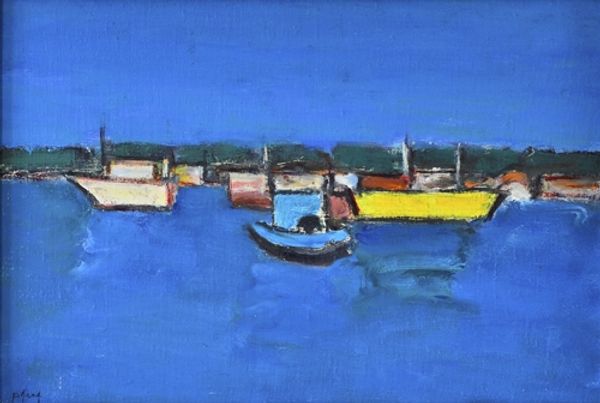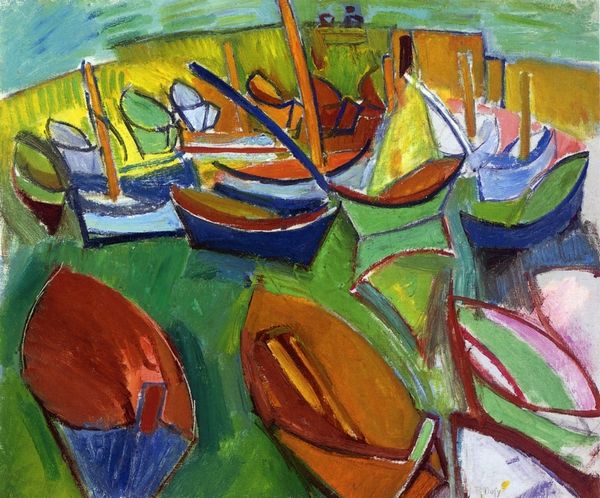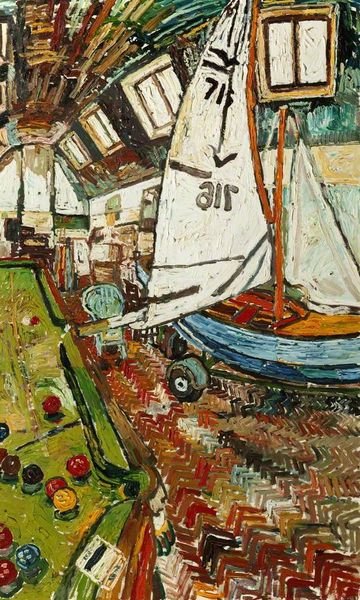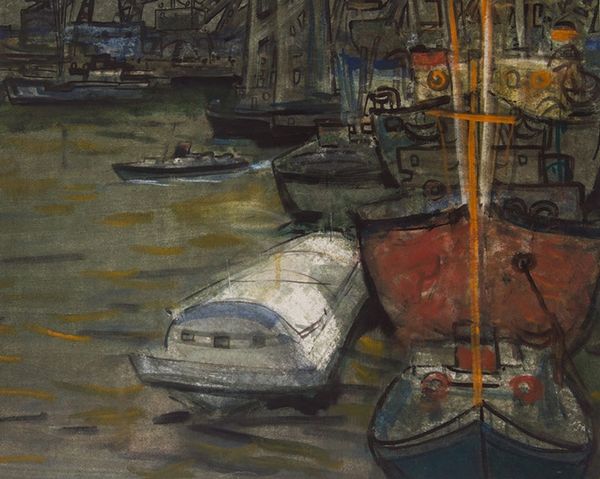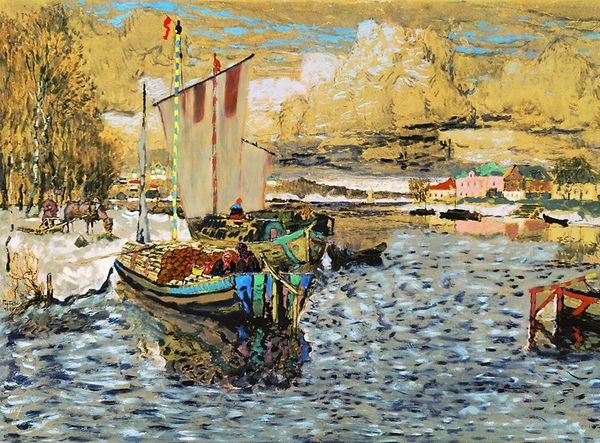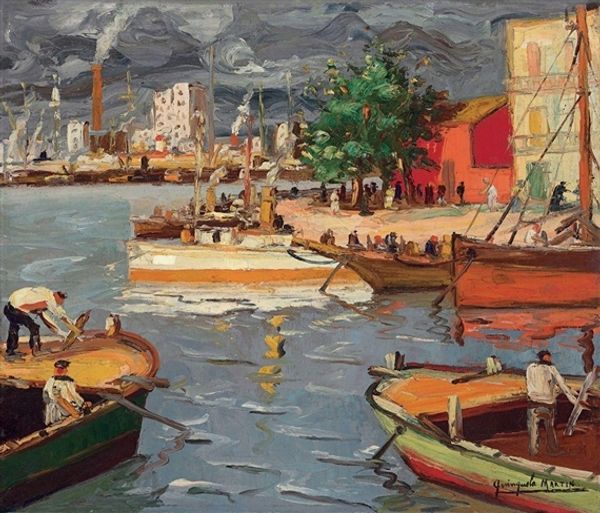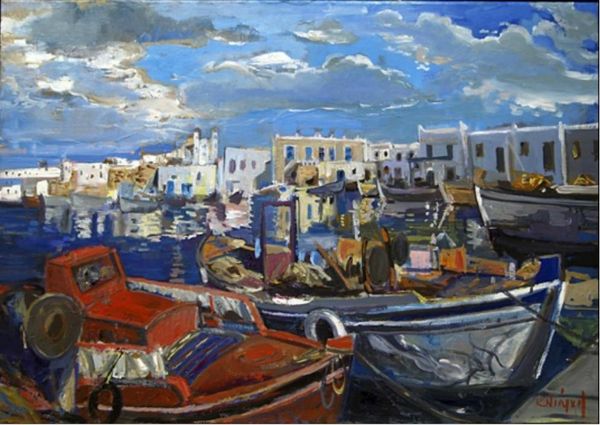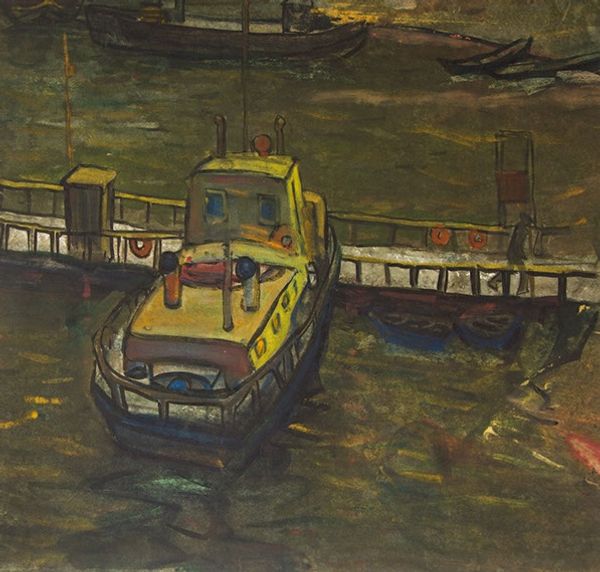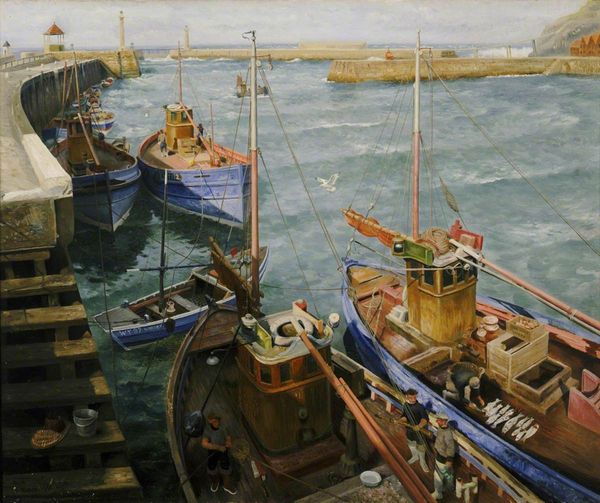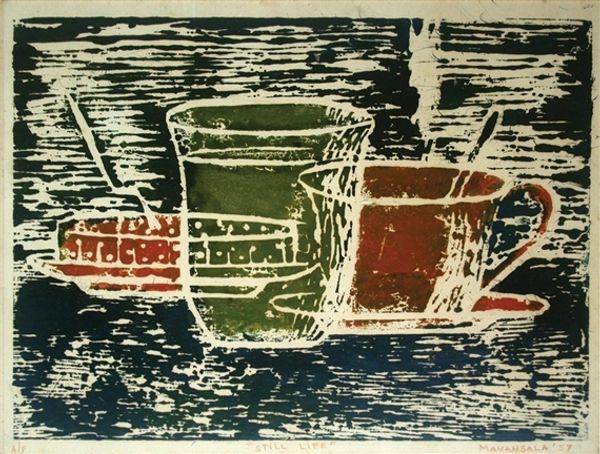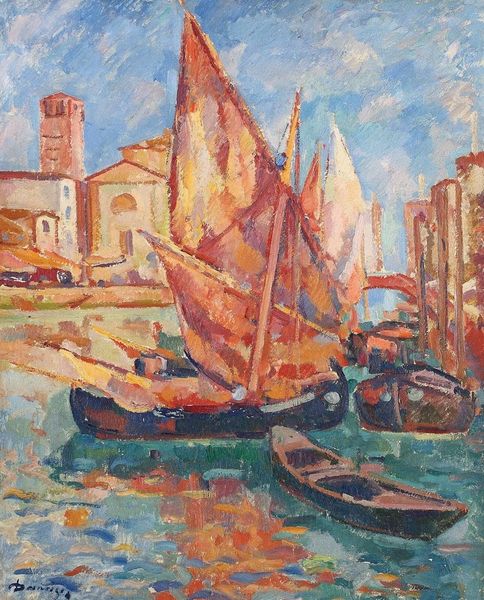
painting, oil-paint
#
painting
#
oil-paint
#
landscape
#
oil painting
#
genre-painting
#
modernism
Copyright: John Bratby,Fair Use
Editor: Here we have John Bratby’s "Protracted Summer on the Water" from 1963, rendered in oil paint. The vibrant colors of the boats really pop against what could be a rather drab dockyard scene, lending the work an almost joyous mood. What catches your eye in this piece? Curator: Initially, it’s the spatial arrangement. The painting sets up an intriguing tension by framing the outdoor scene through what seems to be a window or an architectural opening. Note the artist’s strategic employment of perspective. The foreground boats, rendered with palpable textures, invite immediate visual interest, whereas the background progressively flattens, creating layers within the pictorial space. Editor: So, you're drawn to the contrasts – the textured versus the flattened, and the defined foreground against the blurred background? Curator: Precisely. Examine, too, the materiality of the paint itself. Bratby’s impasto technique, evident in the boats’ contours and water reflections, doesn’t merely depict; it constructs a tactile experience for the eye. The varying densities and directional strokes imbue a sense of movement, almost as though the canvas breathes. Editor: It’s like the paint itself becomes another element within the scene, almost as important as the boats or water. Is that common in Modernism? Curator: Indeed, this focus on the material properties of painting—the pigment, brushstrokes, and canvas—is central to the modernist project. Bratby, through his deliberate application, directs our attention to painting as both representation and object. This dual presence challenges conventional notions of pictorial space and invites reflection on how we perceive the artwork. Editor: That’s fascinating. I didn't consider how the act of painting itself adds to the overall effect, drawing focus away from subject matter to how it is presented. Thanks for clarifying that for me. Curator: My pleasure. It is in analyzing how such formal devices structure meaning that we come to a richer understanding of modern art.
Comments
No comments
Be the first to comment and join the conversation on the ultimate creative platform.

